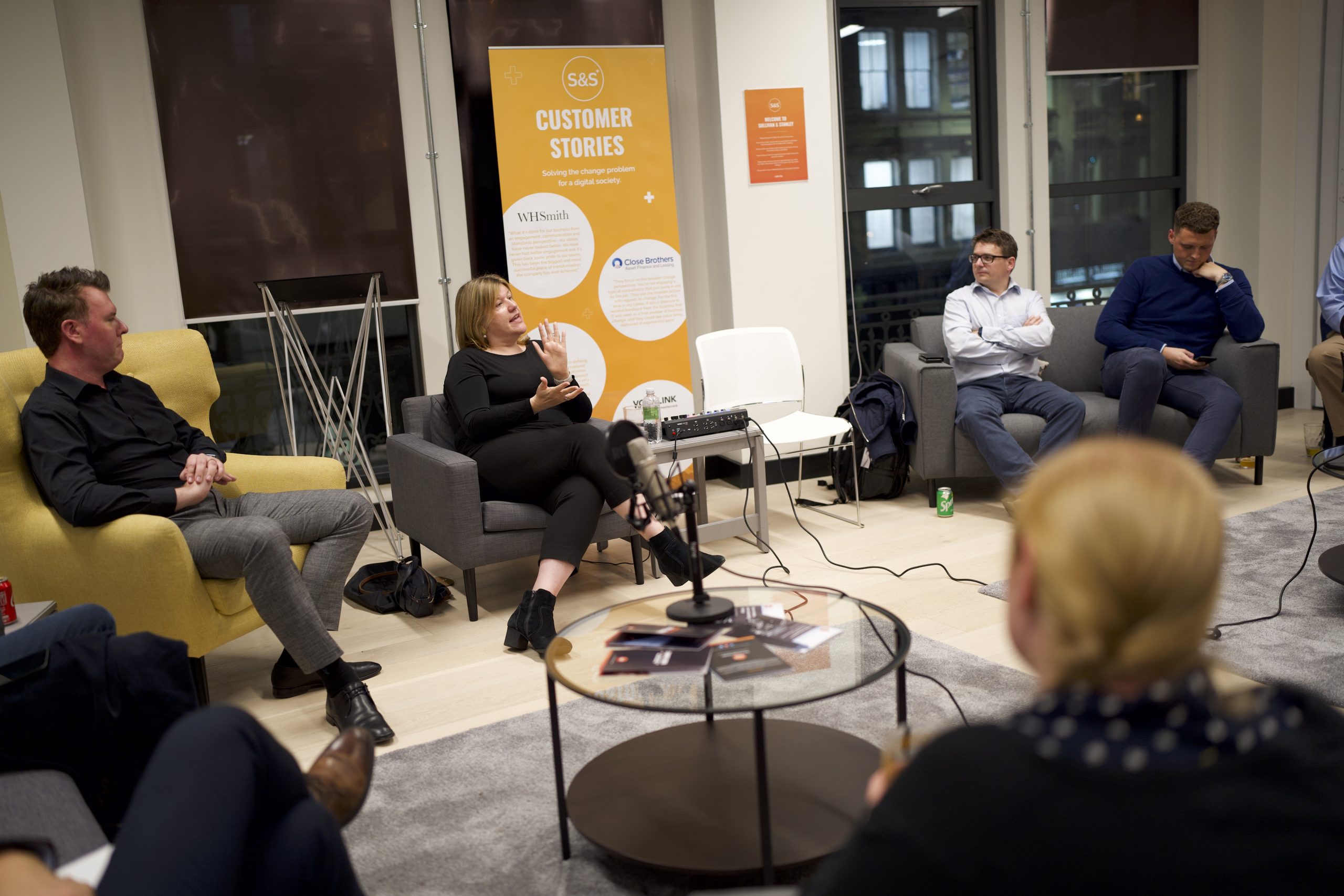The interim consultancy model is particularly attractive for Private Equity (PE) houses. These organisations require a specific set of skills to take their investments from A to B within a short window while creating an outcome that delivers long-term value. In this fast-paced environment, there is no time for people to get up-to-speed, which is why PE houses favour more of a ‘plug & play’ model.
We invited practitioners from The Change Society to join us in a roundtable event to share their insights on what to be mindful of when embarking on a PE transformation together with panellists Karen Thomas-Bland and James Coughlan.

Understanding the PE world
The bad…
Let’s get it out in the open – the world of PE isn’t for everyone.
Transformations are approached in a very direct, some may say cut-throat way. If you’ve come from the corporate world it can be a shock because everything is black and white. You can be parachuted into the middle of a distressed business and expected to fight fires from day one. Typically, PE houses strip away as much as possible so you work in a lean business without the resources on hand that you’re used to. And you face some straight-talking people, which may be hard if you struggle with blunt straight talking.
The good…
It is a great environment to work in. Everyone collaborates, works towards a common goal, and is incentivised to succeed. The organisation is very focused but it’s still fun with the usual office camaraderie. And while PE professionals are very analytical, they tend to have good instincts that come with experience from many deals. This enables them to make quick decisions, and build the right business case to secure stakeholder buy-in.

The good to know…
Forget death by PowerPoint: you absolutely need to do your due diligence but PEs are focused on the numbers. Don’t let them drown in slideware. Provide a summary that covers the P&L and balance sheet impacts.
You’re measured on your last gig: PE is interested in the high-level information, such as how quickly you completed the project, what was the quantifiable value you delivered, and what were the key outcomes?
A job for life: PEs don’t tend to think in silos, so once you’ve proved yourself, they will look to use your skills elsewhere on other projects.
Be aware of how different scenarios affect the environment: a minority owned PE will be looking at how to influence the management team; in a PE majority owned environment, the style may be more directive. In either case, the goal is a good healthy relationship between PE and the management team.
The impact of Covid: before, the tendency was to leave interims to get on with the job. Now there is a bigger emphasis on knowledge transfer so teams become more self-sustaining.

Experience is invaluable, as is making an impact fast
Think about the value you create
The best interims are those who have worked across multiple sectors because they bring with them a breadth of experience. In the age of Industry 4.0, never undervalue the importance of digital skills. And make sure to express the value of every transformation project you’ve undertaken – not just the activities performed.
Emphasise ‘test & learn’
The best transformation projects are those that take an iterative approach, where you deliver in short 90-day value cycles. If something doesn’t work you fail quickly, and when it does you scale it up. PE houses understand and value the need to test and learn because it’s a good way for them to ensure they’re not being led down the wrong path.
Demonstrate value in the first 30 days
The first 30-days are hectic because you’re bombarded from all sides – but they’re also the most important. Everything you do hangs off the strength of the relationships you build, so go out to meet people and get to understand them and the challenges you can help them with. At the same time, try to identify 3 small things you can immediately deliver – ‘the low hanging fruit’ that would have a big impact, and prove the value you offer.
Know how to manage conflict
PEs naturally want to set ambitious targets
It’s important to acknowledge that a PE firm often takes a very short-term view of a project and is likely to set tough targets – even if they know they are unlikely to reach them. But this can cause tension with the organisation who ultimately have to deliver. You often need to manage that conflict. At the very least, the PE will want their ideas and aspirations acknowledged, but the organisation needs to know how to manage upwards. They need to know how to differentiate between noise, points on the roadmap and priorities to pursue. And then communicate the thought process back to the PE.
Understand the role of the board
The board should be there to challenge both sides – ideally holding a mirror up to every action taken and every decision made to ensure it’s driving towards the shared outcome. Get them to question plans and consider: is it realistic to achieve? While outcomes may be technically possible, realistically it depends on many other factors, for example, business case aims (budget), change management or market receptiveness. Therefore, it’s important to have an open debate to ensure all possibilities have been considered.
Raising concerns in the right way
When there is a disconnect between the PE and organisation, it’s important that a well-thought through case is put forward, rather than allowing defences to instinctively be raised. Talking about where the concerns have come from, the benefits of changing tactics, and the risks of going ahead with the proposed outcome can help find the right way forward.

Define success and get buy in to the targets and end goal
Get alignment upfront
When starting a new PE engagement, it’s crucial to get a common, shared outcome agreed upfront. With everyone pulling in the same direction, you’re less likely to experience tension, and conflicts become easier to resolve.
Communicate effectively with people
PE teams typically communicate with the portfolio company management team. This means when the people below the management hear messages like, “We’re cutting budgets by 20%” or “We’re reigning back our plans for expansion”, it’s hard from a cultural perspective. The PE house and the management team are privy to conversations the rest of the business are not, so you need to take people on a journey that helps them understand the direction of travel.
Keep it simple and deliver value
Some of the most successful transformations are based on two key metrics: cash and return. The best strategy is to make a really successful business case that’s easy to understand – and then track the value being delivered to ensure you stay on course.
Be prepared and help the founders transition
Before an organisation considers PE investment the CEO/founder(s) must mentally prepare for what it will feel like to have another ‘owner’. Going down the PE investment route often means the business is no longer their ‘baby’. The PE house will do the due diligence on the business and if they invest will be part of the board, both scrutinising performance and being a helpful sounding board. They are there to shape and guide the business so it succeeds in achieving a successful exit. But letting go of something you’ve nurtured is a big psychological hurdle that the CEO/founder(s) must come to terms with if the transition is to run smoothly. Always expect some teething problems.
WANT TO KNOW MORE ABOUT HOW S&S CAN HELP YOU AND YOUR ORGANISATION?
– Sign up to our fortnightly newsletter The Pulse with cutting edge business insights from our experts
– If you’re a senior leader or change agent, join one of our change communities to network and share with like-minded individuals
– If you have a problem that needs solving across business change, agility, leadership or transformation and you don’t want to go down the big, traditional consulting route




































































